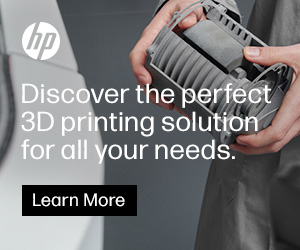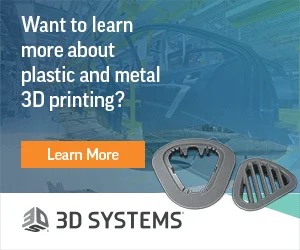SPEE3D Demonstrates Cold Spray 3D Printing in US Navy SALVEX Exercise
SPEE3D, the Australian original equipment manufacturer (OEM) of cold spray additive manufacturing (CSAM) systems, announced that the company participated in the Naval Sea Systems Command (NAVSEA) SALVEX exercise, at Naval Base Pearl Harbor, in May. SPEE3D recently released the Expeditionary Manufacturing Unit — a ruggedized, end-to-end AM ecosystem housed in two shipping containers — and showcased it at Belgium’s AM Village 2024, also in May.
While this is apparently the first NAVSEA SALVEX exercise, the US Navy has been holding SALVEX exercises, war games meant to assess the branch’s capabilities in retrieving damaged maritime hardware, for decades. In collaboration with the Naval Postgraduate School (NPS), SPEE3D tested its technology’s viability for use in repairing parts from a ship “destroyed at sea and towed back to port”.
In a press release about SPEE3D’s participation in the SALVEX exercise at Naval Base Pearl Harbor, a spokesperson for the US Navy said, “Ensuring the security of our nation requires technology that can successfully work in all environments — including at sea — and we’re excited to have SPEE3D join the SALVEX exercise to demonstrate their [AM] capabilities for maritime repair. Supply chain issues are prevalent, so being able to manufacture metal parts quickly and from anywhere is a huge issue that we’re excited to test and hopefully resolve.”
The CEO of SPEE3D, Byron Kennedy, said, “SPEE3D is honored to be selected by the US Navy once again to demonstrate our proprietary cold-spray metal [AM] technology to help solve some of their most pressing supply chain issues in the field. The opportunity to participate in an exercise where a ship will be purposefully damaged as part of a naval exercise is novel, and we are optimistic that XSPEE3D will be able to print crucial metal parts to help repair the vessel quickly.”
“Contested environments” is the latest buzz phrase that observers of the defense industrial base should get familiar with. The US military doesn’t just want to be able to manufacture on-the-go. It wants to be able to do so in conditions as isolated from US supply chains as possible, and in areas under the types of threats that are sure to become increasingly commonplace well into the future.
This explains why SPEE3D has become such a favorite of the US military, and most specifically, of the NPS. On a global scale, enhancing the Navy’s deployable manufacturing capabilities is the most straightforward path toward bolstering the US’s ability to manufacture in contested environments.
While, most immediately and concretely, the concept of contested environments may be about strategic competition between the US and China (among other competitors), from a long-term perspective, it is worth thinking about all global supply chains in those terms. The greatest threats to manufacturing security aren’t going to come from any human-led structure or organization, but from nature itself. In that sense, it is easy to envision a scenario whereby systematically ruggedized swing production capacity goes from a niche concern to a main feature of global economic planning.
Images courtesy of SPEE3D
Subscribe to Our Email Newsletter
Stay up-to-date on all the latest news from the 3D printing industry and receive information and offers from third party vendors.
You May Also Like
Poll of the Week: Best Dental 3D Printing Applications
We asked our LinkedIn followers, in our very first Poll of the Week, what kinds of stories they wanted to read more of on 3DPrint.com, and the final answer was...
Revo Foods to Rev up Mass Production of 3D Printed Alt-Salmon
One of the major challenges facing 3D printed food is its scalability in comparison to traditional food production. The 3D printing industry generally specializes in creating small items. It can...
Carbon Adds Three New 3D Printing Resins to Dental Materials Portfolio
Product development and manufacturing technology company Carbon has a very strong materials platform, including engineering-quality elastomers and photopolymers, for applications ranging from sportswear to medical and dental. This week, the...
Custom 3D Printed Eyewear, Now in Translucent Colors from Materialise
Way back in 2017, Fried Vancraen, CEO of Materialise, said he could foresee “a growing amount of meaningful applications” for 3D printing, which included customized eyewear. The Belgium-based 3D printing...


































